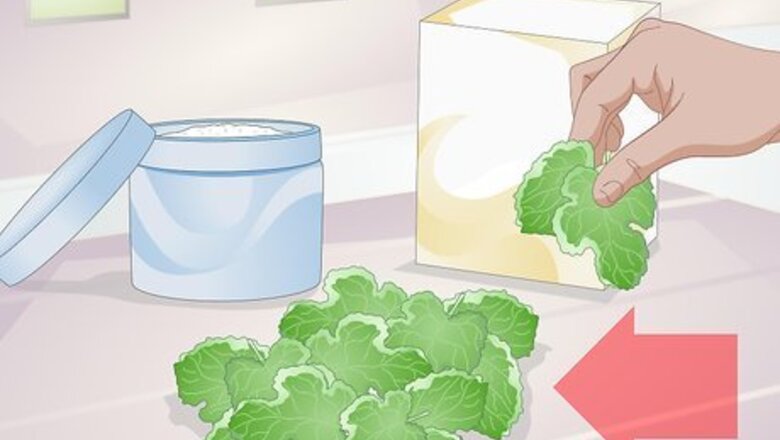
views
Making Silkworm Chow From Scratch
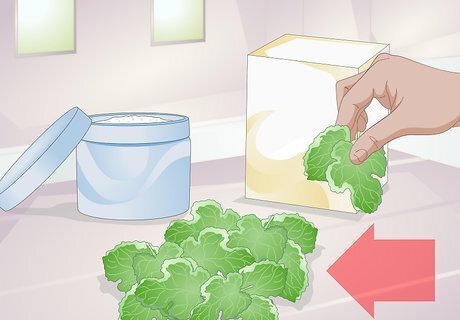
Gather the ingredients. Before you begin making your chow, you'll want to gather all the materials you'll need. The main ingredients are dried mulberry leaves, soy flour, and maize or cornmeal. Weigh out 29 ounces (822.15 grams) of mulberry leaves. Weigh 28 ounces (793.8 grams) of soy flour. Measure 6.1 ounces (172.935 grams) of maize/corn meal. Do not mix the ingredients yet. You'll need to prepare the mulberry leaves first.
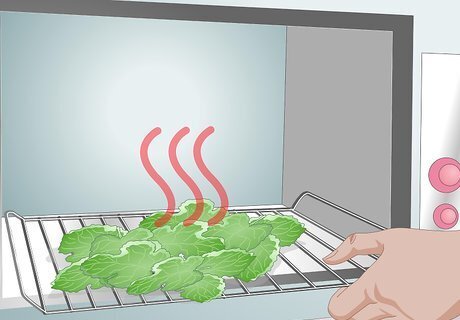
Dry out the mulberry leaves. While you can feed your silkworms fresh mulberry leaves, you will need to dry and grind your leaves if you want to make chow. Make sure the leaves are completely dry before proceeding with the recipe. You can dry out your leaves in an oven or with a dehydrator. Check that the leaves are completely dry. Any residual moisture can cause mold or bacteria to grow in the chow. The dried leaves should be brittle and flaky to the touch.
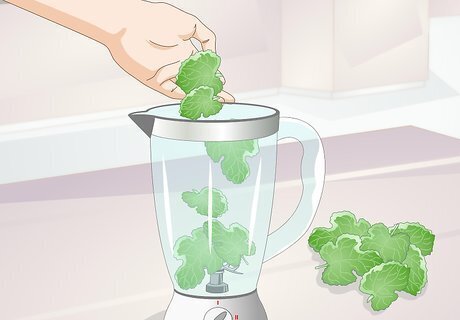
Grind the dried mulberry leaves into powder. Once the leaves are completely dry, you'll need to grind them down into a fine powder. This powder will become the main ingredient in your powdered silkworm chow. Break the brittle leaves into small pieces. Feed the pieces of dried leaves into a coffee grinder, herb grinder, or food processor. If there are any chunky pieces after grinding, scoop them into a fine mesh strainer and press the chunks through the mesh with the back side of a spoon.
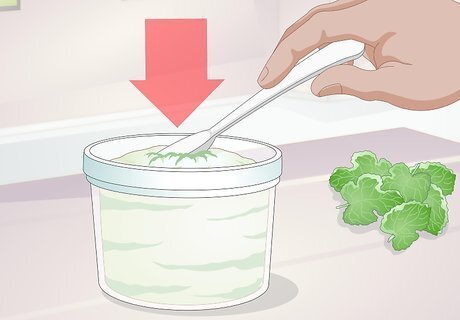
Combine and store the dry ingredients. Once you've ground the mulberry leaves into a fine powder, you can combine them with the soy flour and corn meal. This will give you a powdered silkworm chow similar to what you would buy in stores or through an online retailer. When you're ready to feed the chow to your silkworms, you can follow the standard powdered chow preparation instructions as you would for store-bought powder.
Preparing a Powdered Silkworm Chow
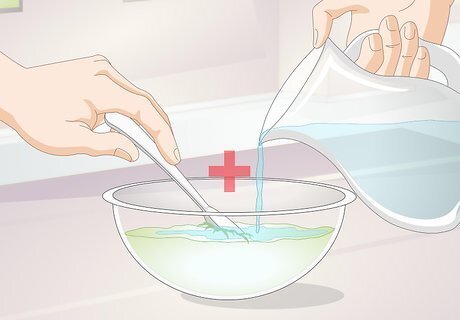
Mix the powder with water. The first step in preparing powdered silkworm chow is to add water. You'll want to make sure that you use the right ratios of water and powder to achieve an ideal consistency. Some experts recommend a ratio of one part silkworm chow to two parts water. One pound (453.6 grams) of prepared chow should be sufficient to raise 20 to 25 silkworms through a complete life cycle. You can scale your mix preparations up or down as needed. Use hot water to facilitate a better mix. Mix the powder and water for approximately three to five minutes to ensure that they are thoroughly blended together.
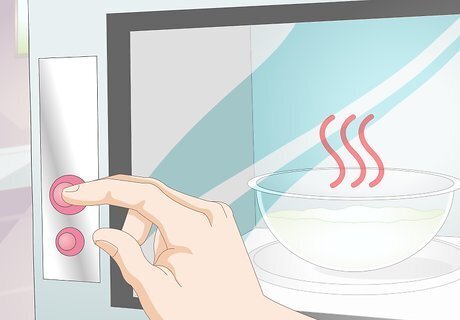
Heat up the mixture in the microwave. Heating the mixture will help form a more solid chow patty. It can also help kill any bacteria or mold that may have formed in the chow mix. Cover the container with plastic wrap. This will help seal in moisture and heat the mixture more efficiently. Microwave the mixture for three to eight minutes, depending on the strength of your microwave.
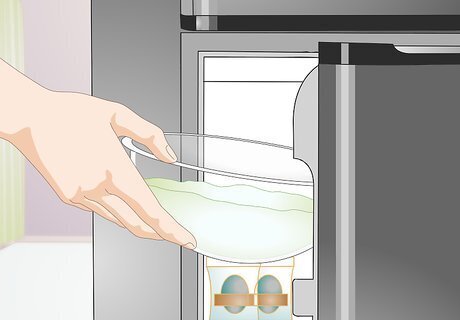
Leave the chow in the refrigerator to harden. The heated chow patty should be left in the refrigerator until it hardens to a cream cheese-like consistency. Make sure the mixture is not too watery, as watery chow could potentially drown your silkworms. The exact duration of time it takes to harden will vary, depending on your refrigerator and the consistency of your chow.
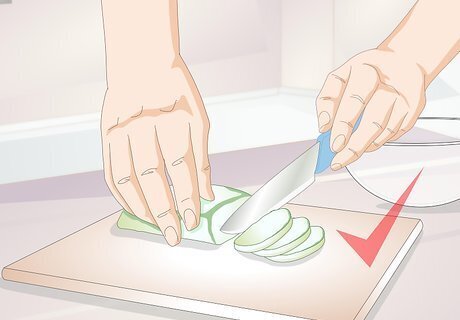
Cut the hardened chow into small pieces and serve. Once the chow has hardened, it can be cut and served to your silkworms. You can also use a cheese grater to shave the hardened chow and distribute it more evenly.
Using Real Mulberry Leaves
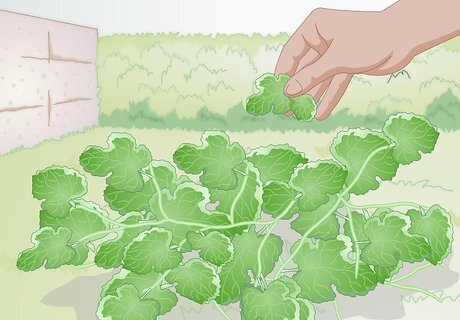
Secure a steady mulberry source. If you're opting to use real mulberry leaves, you'll need a steady source to ensure that they're fresh. Some experts advise that the mulberry leaves should be fresh and moist to ensure a healthy batch of silkworms. Make sure the leaves are free of pesticides, as these toxins could kill your silkworms.
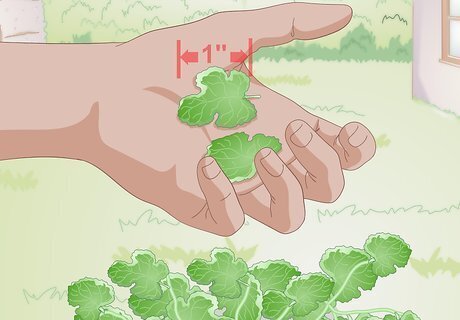
Use appropriately-sized leaves. Using fresh mulberry leaves is easier than making your own chow, but you can't just toss some leaves into your silkworm habitat. The leaves you serve should be sized appropriately for the silkworms you're raising. Young silkworms can only eat young leaves. Older leaves are too tough for young silkworms to eat. Newly hatched silkworms should only be fed tiny new growth mulberry leaves measuring approximately 0.5 to 1 inch (1.25 to 2.5 centimeters) long. Older silkworms can safely eat larger, older leaves.

Distribute the mulberry leaves to your silkworms. Your silkworms will readily eat the leaves you give them. Over time, though, they may stop eating for extended periods. This is normal; silkworms molt three or four times during their growing period, and they typically stop eating or moving just before a molt.




















Comments
0 comment